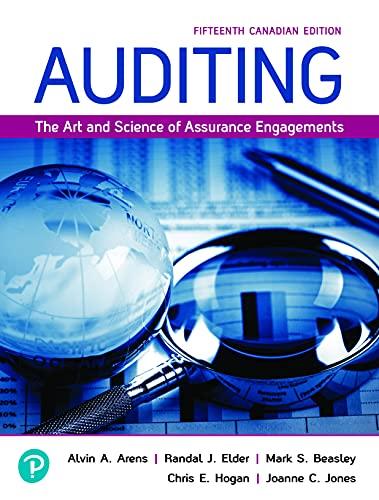Below is a conversation between Mitch and AJ, the audit junior. AJ: Hi Mitch, how is it
Question:
Below is a conversation between Mitch and AJ, the audit junior.
AJ: Hi Mitch, how is it going?
MB: Good, I was relaxing until you came along.
AJ: Fran asked me to do some analysis of Hillsburg’s inventory, so I prepared some information for her. Could you please take a look?
MB: Sure. Oh wow! Lots of numbers here.

AJ: Yes, I pulled together the year-end inventory balances for items that Fran was interested in and wanted to look at. I also included Hillsburg’s loss provision for those items.
MB: Great! But I get dizzy looking at all these numbers. Let’s hope that Fran can make sense out of this information.
AJ: What do you mean?
MB: Well, maybe you could have presented this information in a different way. Have you heard of data visualization? Excel has some simple features—sparklines and icon sets—that you can use to help see the trends in the data. I found some cool videos that show you how to use those functions. Why don’t you give it a try and see what you come up with.
AJ: Ok, I think I can do that.
REQUIRED
1. Discuss and explain the advantages and benefits of data visualization versus numerical presentation of data for risk assessment procedures.
2. Discuss the common types of data visualizations and how they can be used for risk assessment procedures.
3. Access the two videos Mitch mentioned (the links are below) and perform the analysis of inventory using sparklines and icon sets.www.journalofaccountancy.com/videos/excel -sparklines-how to.htmlwww.journalofaccountancy.com/videos /microsoft-excel-icon-sets-how-to.html
4. What do you see in the data? What further inquiries would you make to follow up on your analysis?
Step by Step Answer:

Auditing The Art And Science Of Assurance Engagements
ISBN: 9780136692089
15th Canadian Edition
Authors: Alvin A. Arens, Randal J. Elder, Mark S. Beasley, Chris E. Hogan, Joanne C. Jones





